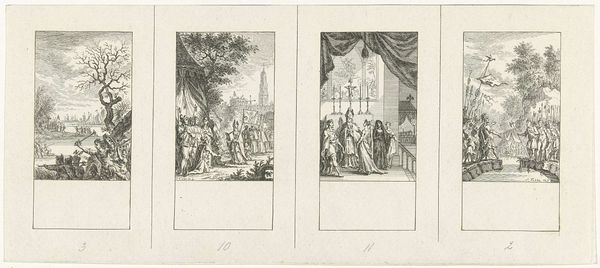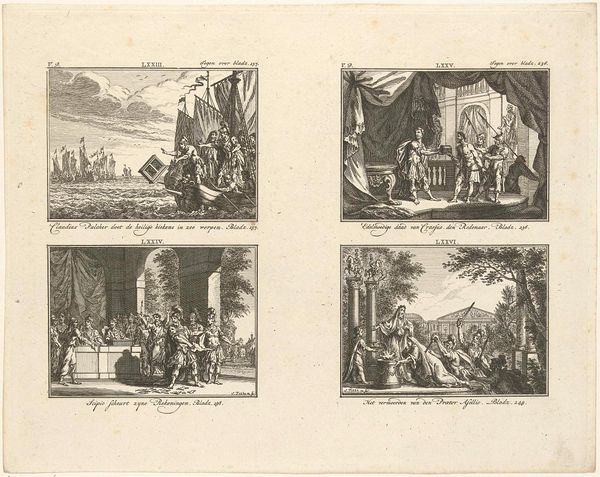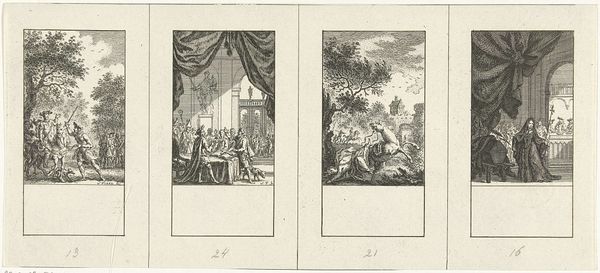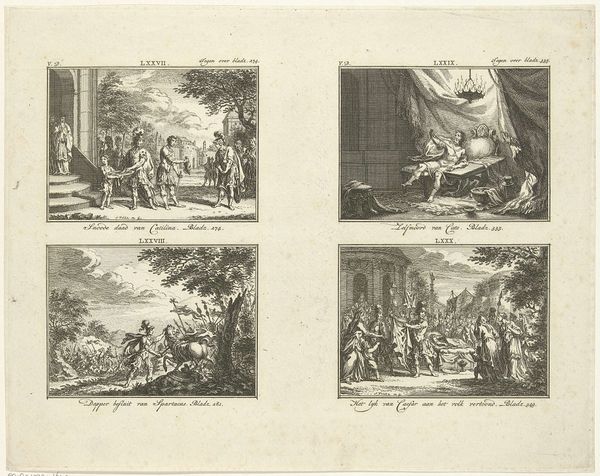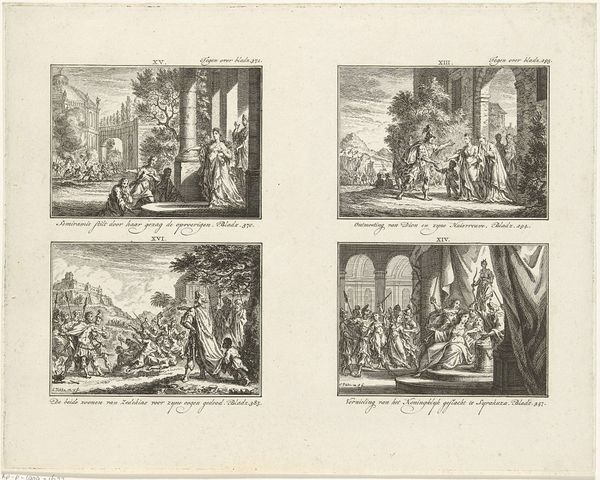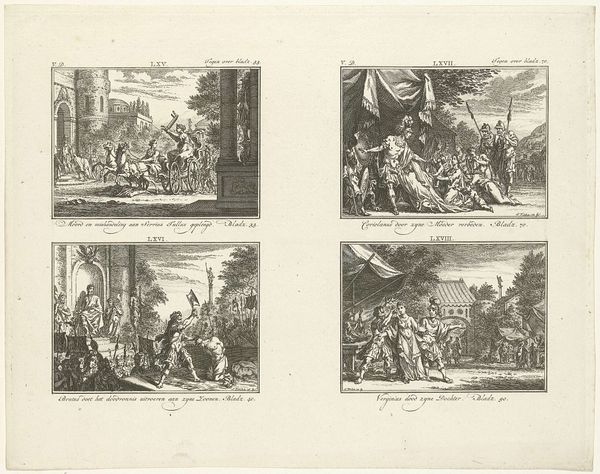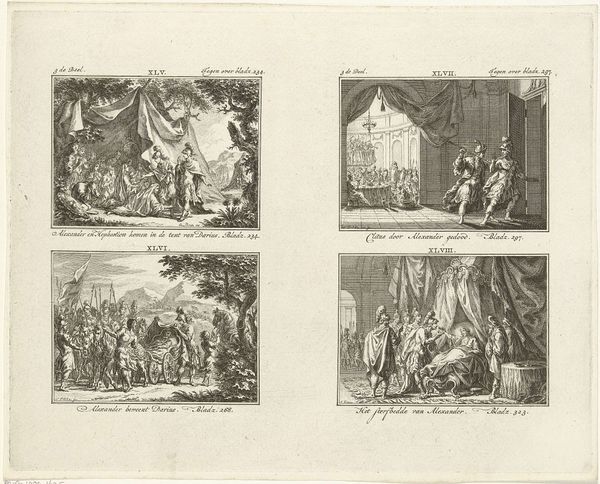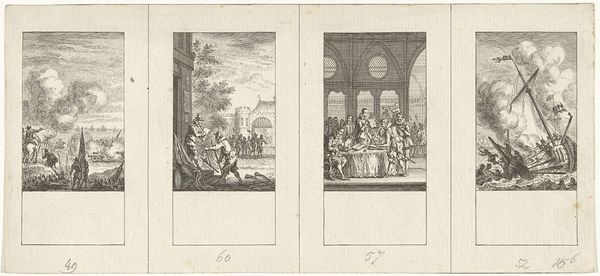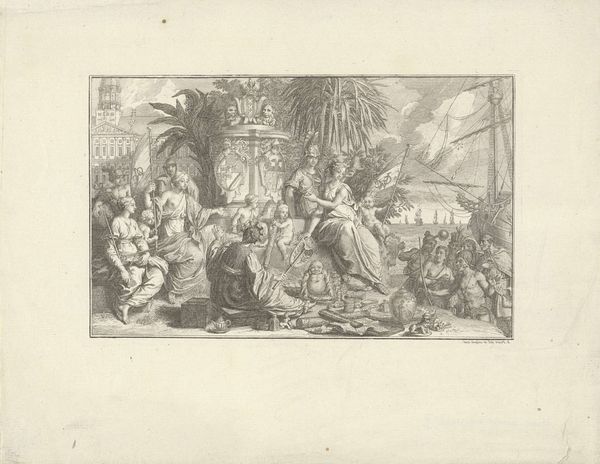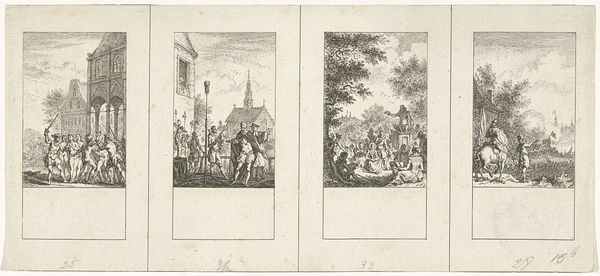
print, etching, engraving
#
narrative-art
#
dutch-golden-age
# print
#
etching
#
etching
#
figuration
#
line
#
history-painting
#
engraving
Dimensions: height 119 mm, width 261 mm
Copyright: Rijks Museum: Open Domain
These four scenes from Dutch history were etched by Simon Fokke, sometime before his death in 1784. Etching, like engraving, is an indirect method of making an image. A metal plate is coated with a waxy, acid-resistant substance called a ‘ground’. The artist then scratches through the ground with a needle, exposing the metal. When acid is applied, it bites into the exposed lines, creating grooves. This linear process is a contrast to the images themselves, which are full of drama and incident. The acid acts almost like a tiny chisel, pushed by the etcher's hand, creating a narrative through labor. You can see the amount of work involved in the production process. It required skill and patience to achieve this level of detail. Fokke's series highlights the power of the printed image, which could circulate widely and shape public opinion. This was an important function of craft in the 18th century, challenging any simple distinction between the so-called ‘fine’ and ‘applied’ arts.
Comments
No comments
Be the first to comment and join the conversation on the ultimate creative platform.
